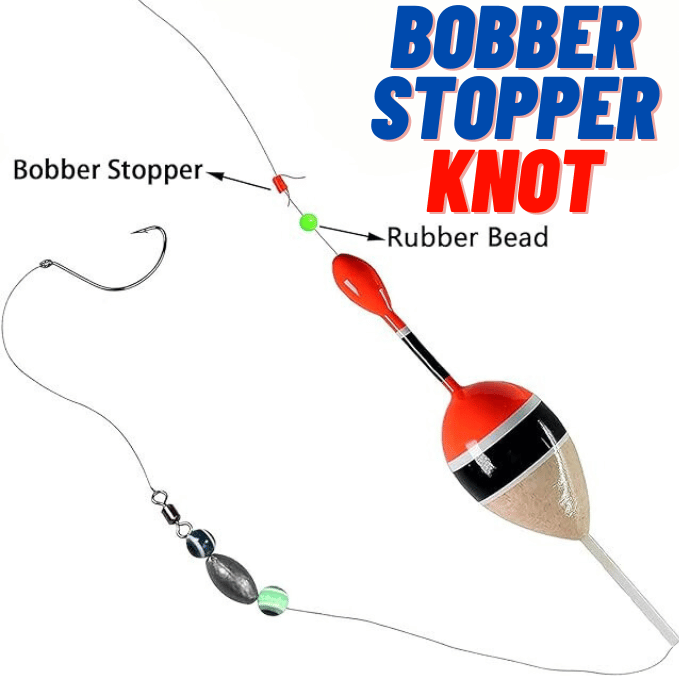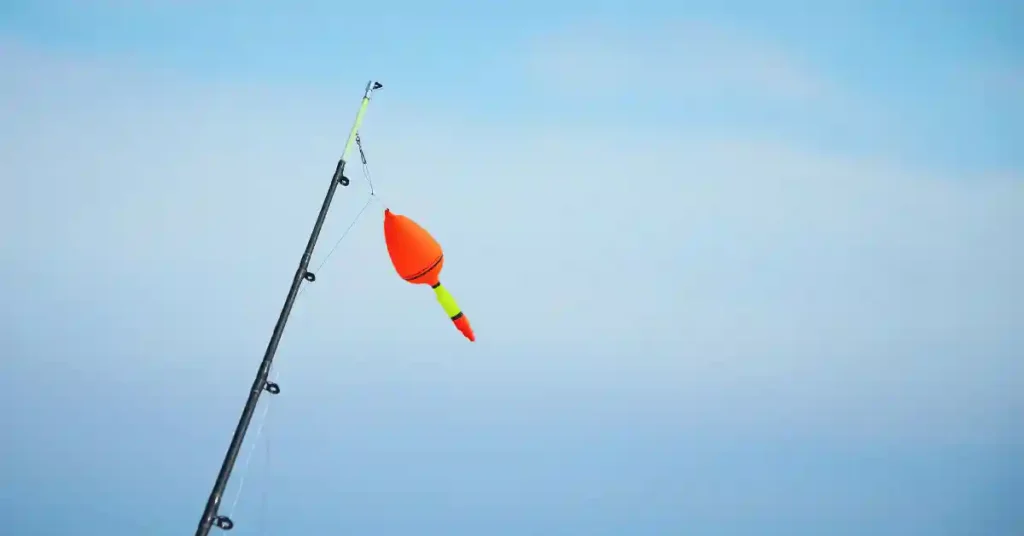7 Easy Steps to Tie Bobber Stopper Knot

When it comes to fly fishing, having the right tools and techniques can make all the difference in your success on the water. One such tool that every fly angler should have in their arsenal is the bobber stopper knot.
This versatile knot can be used in various situations and can greatly enhance your fishing experience. In this comprehensive guide, we will explore the ins and outs of the bobber stopper knot, from its purpose and benefits to step-by-step instructions on how to tie it.
So, grab your fly rod and get ready to take your fly fishing game to the next level!
What is a Bobber Stopper Knot?
The bobber stopper knot, also known as a float stopper knot, is a simple yet effective knot that is used to prevent your strike indicator, or bobber, from sliding up and down your fishing line.

While its primary purpose is to mark the position of the indicator for easy resetting, it can also be used to adjust the depth at which your fly is presented.
This makes it an invaluable tool for fly anglers who want to target specific depths in the water column.
Benefits of Using a Bobber Stopper Knot
Using a bobber stopper knot offers several advantages for fly anglers:
- Quick and Easy Depth Adjustment: With a bobber stopper knot in place, you can quickly and easily adjust the depth at which your fly is fishing. This allows you to target fish at different depths without the need for complicated leader adjustments or retying knots.
- Consistent Depth Control: Once you have set your bobber stopper knot at a specific depth, it will stay in place throughout your fishing session. This ensures that your fly consistently fishes at the desired depth, increasing your chances of enticing strikes from fish.
- Efficient Fly Changes: When you need to change flies, having a bobber stopper knot in place makes the process much faster and more efficient. You can simply remove the old fly, attach the new one, and slide the bobber stopper knot back into position. No need to re-measure and adjust your leader each time.
- Versatility: While the bobber stopper knot is commonly used with strike indicators, it can also be used with other types of bobbers or floats. This versatility allows you to adapt to different fishing situations and target various species of fish.
How to Tie a Bobber Stopper Knot
Now that you understand the benefits of using a bobber stopper knot, let’s dive into the step-by-step process of tying this essential knot.

Follow these instructions, and you’ll be ready to hit the water with confidence:
Step 1: Gather Your Materials
Before you begin tying the bobber stopper knot, gather the following materials:
- Main fishing line
- Monofilament fishing line or Dacron fly line backing for the stopper line
- Bobber or strike indicator
Step 2: Position the Stopper Line
Lay the stopper line against the main fishing line at the desired location where you want the bobber to stop. Double back the stopper line to form a loop, making sure it is snug against the main line.
Step 3: Make Turns Around Both Lines
Hold the loop where the stopper line crosses over itself and the main fishing line. Make three or four turns around both lines, passing the stopper line through the open loop each time.
Step 4: Tighten the Knot
Pull the two ends of the stopper line in opposite directions to tighten down the knot securely against the main line. Ensure that the knot is snug and won’t slip when pressure is applied.
Step 5: Trim Excess Line
Using a pair of scissors or line clippers, trim the tag ends of the stopper line close to the knot, leaving a neat and clean finish.
Step 6: Attach the Bobber or Strike Indicator
Slide the bobber or strike indicator onto your main fishing line below the bobber stopper knot. Make sure it is positioned securely against the knot to prevent any slippage during fishing.
Step 7: Adjust Depth and Cast
With the bobber stopper knot in place and the bobber or strike indicator attached, you can now adjust the depth at which your fly will fish.
Simply slide the bobber stopper knot up or down the line to the desired position. Once you have set the depth, make your cast and get ready to entice some fish!
Recommended: How To Fish Emerger For Trout
Tips and Tricks for Using a Bobber Stopper Knot
To make the most of your bobber stopper knot, here are some additional tips and tricks to keep in mind:
- Experiment with Depths: Don’t be afraid to adjust the depth of your fly using the bobber stopper knot. Different fish species may be holding at various depths, so try different settings to find what works best.
- Consider Water Conditions: Factors such as water depth, current speed, and fish behavior can influence the optimal depth for fishing. Pay attention to these variables and be willing to make adjustments as needed.
- Use Different Bobber Colors: If you’re using a colored bobber or strike indicator, choose a color that contrasts well with the water conditions. This will make it easier for you to spot any movement or subtle strikes.
- Inspect the Knot Regularly: Before each fishing session, inspect your bobber stopper knot to ensure it is still secure and in good condition. A weak or damaged knot could lead to lost fish or frustration on the water.
- Practice Makes Perfect: Like any other knot, tying the bobber stopper knot takes practice. Spend some time at home honing your knot-tying skills so that you can tie it confidently and efficiently on the water.
Now that you have mastered the art of tying a bobber stopper knot, it’s time to head out to your favorite fishing spot and put your newfound knowledge to the test.
Whether you’re targeting panfish, trout, or other species, the bobber stopper knot will prove to be a valuable tool in your fly fishing adventures. So, tie it on, cast your line, and get ready for a memorable day on the water!
Final Words
In the world of fly fishing, having the right techniques and tools can greatly enhance your fishing experience. The bobber stopper knot is one such tool that every fly angler should have in their repertoire.
Its versatility and ease of use make it an invaluable asset on the water. By following the step-by-step instructions provided in this guide, you can confidently tie a bobber stopper knot and elevate your fly fishing game.
So, grab your fly rod, tie on that bobber stopper knot, and get ready to reel in some unforgettable catches!

Meet Ibrahim Khan, an avid angler and author in Fishing Teach. He shares his wealth of knowledge from his 16 years of experiences in fishing. His articles are a captivating blend of practical insights and thrilling tales that invite readers into the enchanting world of fishing.
Ibrahim’s guides are your go-to guide in the realm of fishing on this informational site. Hailing from a coastal paradise, Ibrahim’s passion for angling is the heartbeat of his life.
